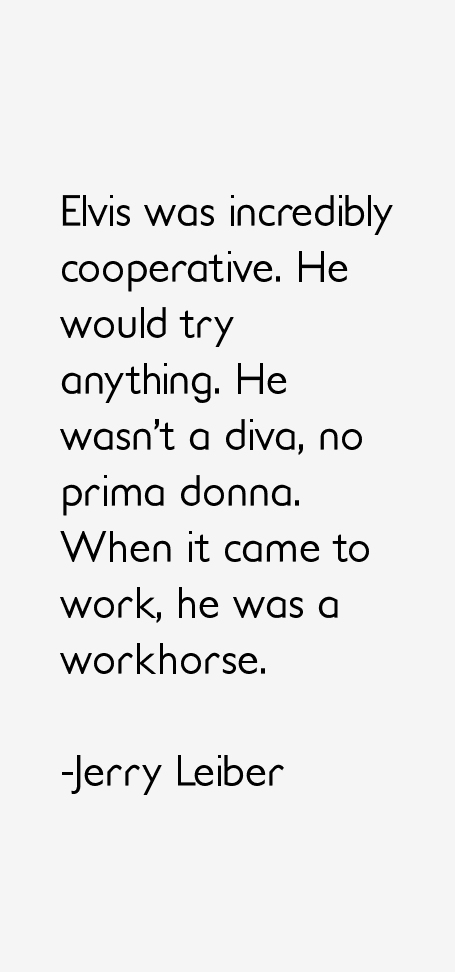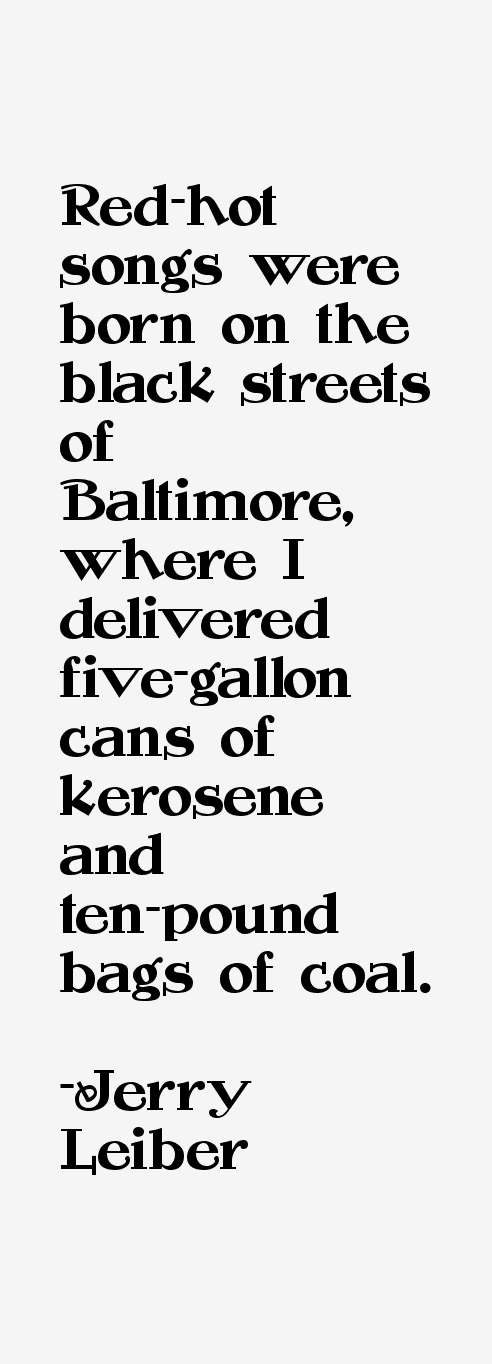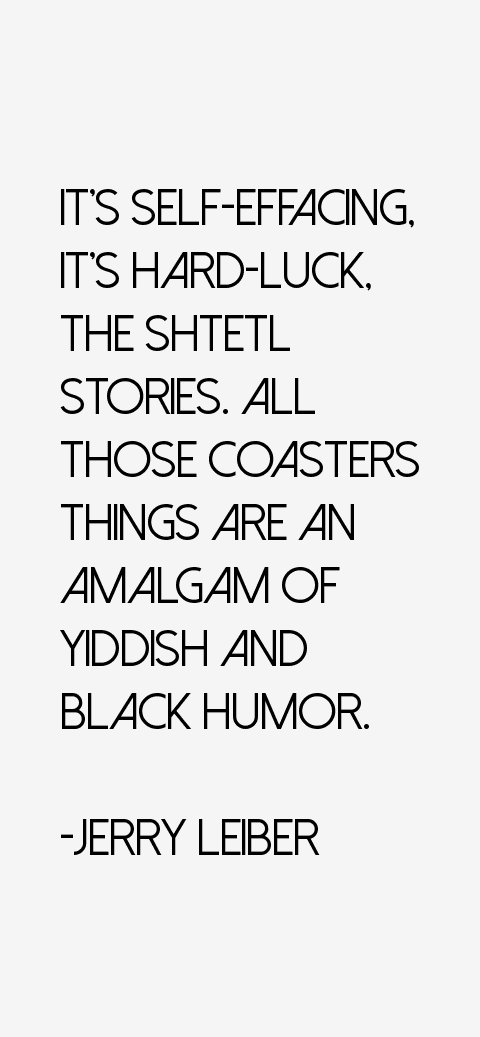Jerry Leiber Quotes & Sayings
16 most famous Jerry Leiber quotes and sayings (musician). These are the first 10 quotes we have for him.
“The early influences, in many ways, were in Baltimore. I was passing open windows where there might be a radio playing something funky. In the summertime, sometimes there'd be a man sitting on a step, playing an acoustic guitar, playing some kind of folk blues. The seed had been planted.”

“Elvis was incredibly cooperative. He would try anything. He wasn't a diva, no prima donna. When it came to work, he was a workhorse.”

“Red-hot songs were born on the black streets of Baltimore, where I delivered five-gallon cans of kerosene and ten-pound bags of coal.”
“'Hound Dog' took like twelve minutes. That's not a complicated piece of work. But the rhyme scheme was difficult. Also the metric structure of the music was not easy. 'Kansas City' was maybe eight minutes, if that. Writing the early blues was spontaneous. You can hear the energy in the work.”
“I felt black. I was as far as I was concerned. And I wanted to be black for lots of reasons. They were better musicians, they were better athletes, they were not uptight about sex, and they knew how to enjoy life better than most people.”

“It's self-effacing, it's hard-luck, the shtetl stories. All those Coasters things are an amalgam of Yiddish and black humor.”
“And there's always one special element. In 'There Goes My Baby,' it's the out-of-tune timpani. 'Stand by Me,' it's the bass pattern. Of course, all the elements come together to make a great record. But there's always one standout.”
“Our songs did not transcend being R&B hits. They were R&B hits that white kids were attracted to. And if people bought it, it became rock & roll. That's marketing. Why couldn't it still be R&B? The bass pattern didn't change. The song didn't change. It was still 'Yakety Yak' and 'Searchin'.'”
“The first memory I have was my sisters dancing to the radio when they played records by Benny Goodman and Harry James and of the sort. But the record that got me was a record by Derek Sampson, who was a young guy, called 'Boogie Express,' and it was boogie-woogie. Really, it was on fire, and that got me.”
“Teenagers especially are very, very conscious about what is hip and what is lame and what is square and what is out and what is in, you know. And, I mean, I grew up right there in the middle of a black culture. And I knew dead-on what it was.”
Jerry Leiber Quotes Rating
No Ratings Yet
Leave A Comment
























